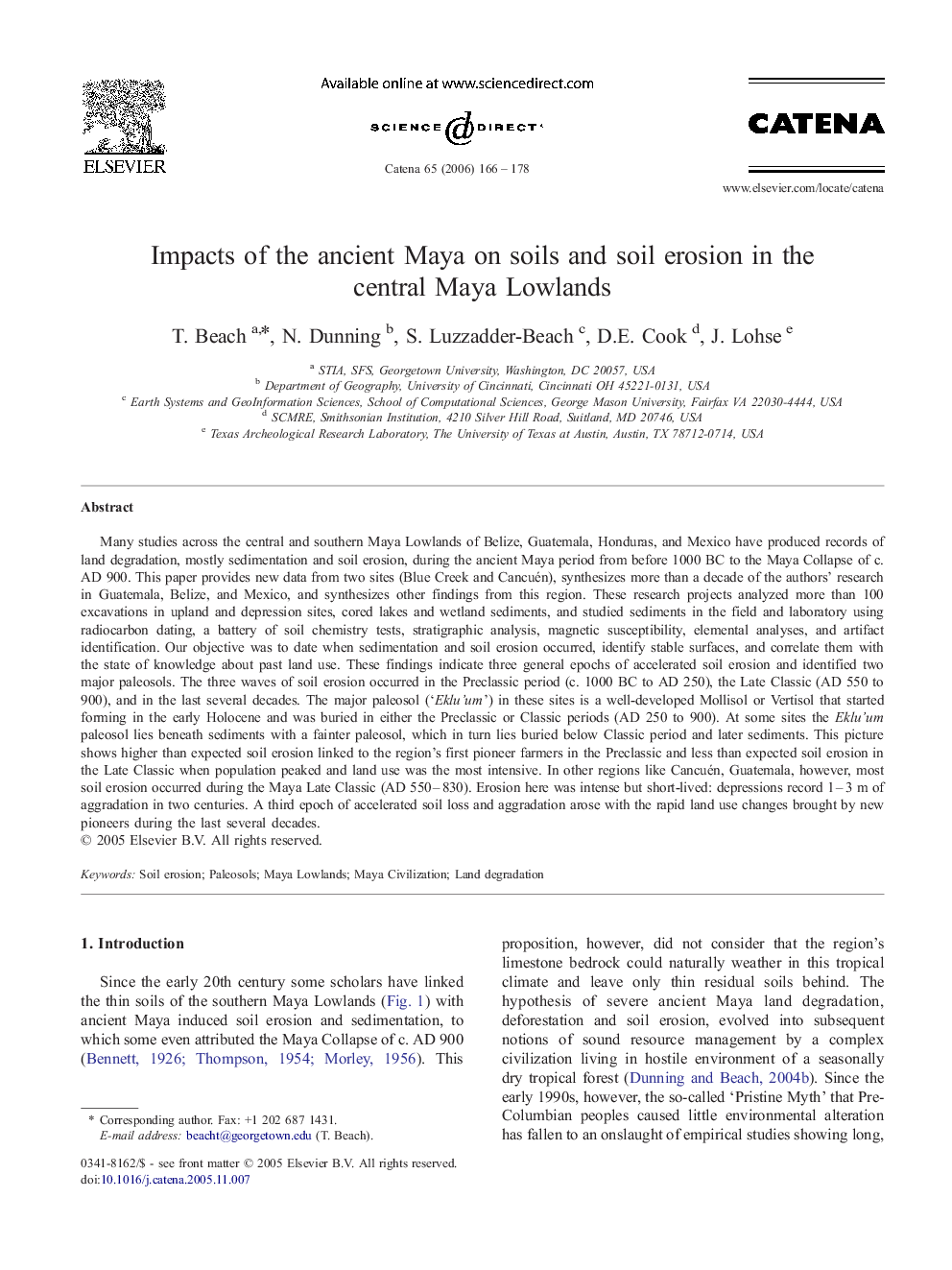| Article ID | Journal | Published Year | Pages | File Type |
|---|---|---|---|---|
| 4572793 | CATENA | 2006 | 13 Pages |
Many studies across the central and southern Maya Lowlands of Belize, Guatemala, Honduras, and Mexico have produced records of land degradation, mostly sedimentation and soil erosion, during the ancient Maya period from before 1000 BC to the Maya Collapse of c. AD 900. This paper provides new data from two sites (Blue Creek and Cancuén), synthesizes more than a decade of the authors' research in Guatemala, Belize, and Mexico, and synthesizes other findings from this region. These research projects analyzed more than 100 excavations in upland and depression sites, cored lakes and wetland sediments, and studied sediments in the field and laboratory using radiocarbon dating, a battery of soil chemistry tests, stratigraphic analysis, magnetic susceptibility, elemental analyses, and artifact identification. Our objective was to date when sedimentation and soil erosion occurred, identify stable surfaces, and correlate them with the state of knowledge about past land use. These findings indicate three general epochs of accelerated soil erosion and identified two major paleosols. The three waves of soil erosion occurred in the Preclassic period (c. 1000 BC to AD 250), the Late Classic (AD 550 to 900), and in the last several decades. The major paleosol (‘Eklu'um’) in these sites is a well-developed Mollisol or Vertisol that started forming in the early Holocene and was buried in either the Preclassic or Classic periods (AD 250 to 900). At some sites the Eklu'um paleosol lies beneath sediments with a fainter paleosol, which in turn lies buried below Classic period and later sediments. This picture shows higher than expected soil erosion linked to the region's first pioneer farmers in the Preclassic and less than expected soil erosion in the Late Classic when population peaked and land use was the most intensive. In other regions like Cancuén, Guatemala, however, most soil erosion occurred during the Maya Late Classic (AD 550–830). Erosion here was intense but short-lived: depressions record 1–3 m of aggradation in two centuries. A third epoch of accelerated soil loss and aggradation arose with the rapid land use changes brought by new pioneers during the last several decades.
